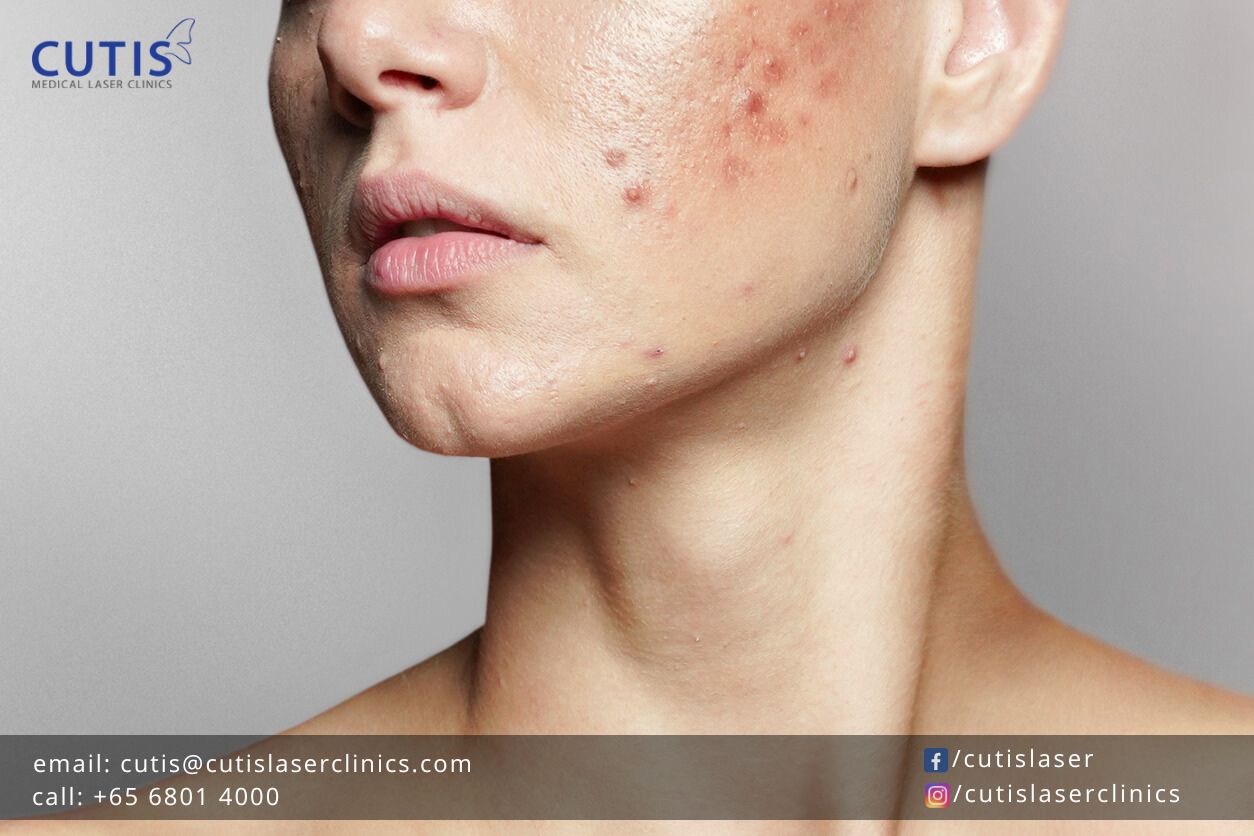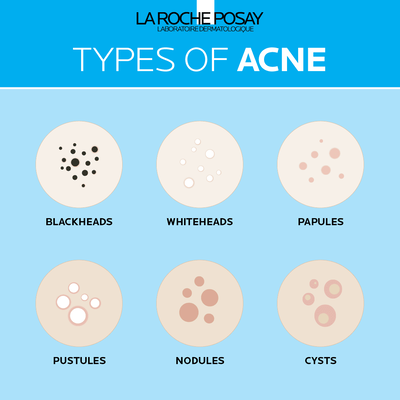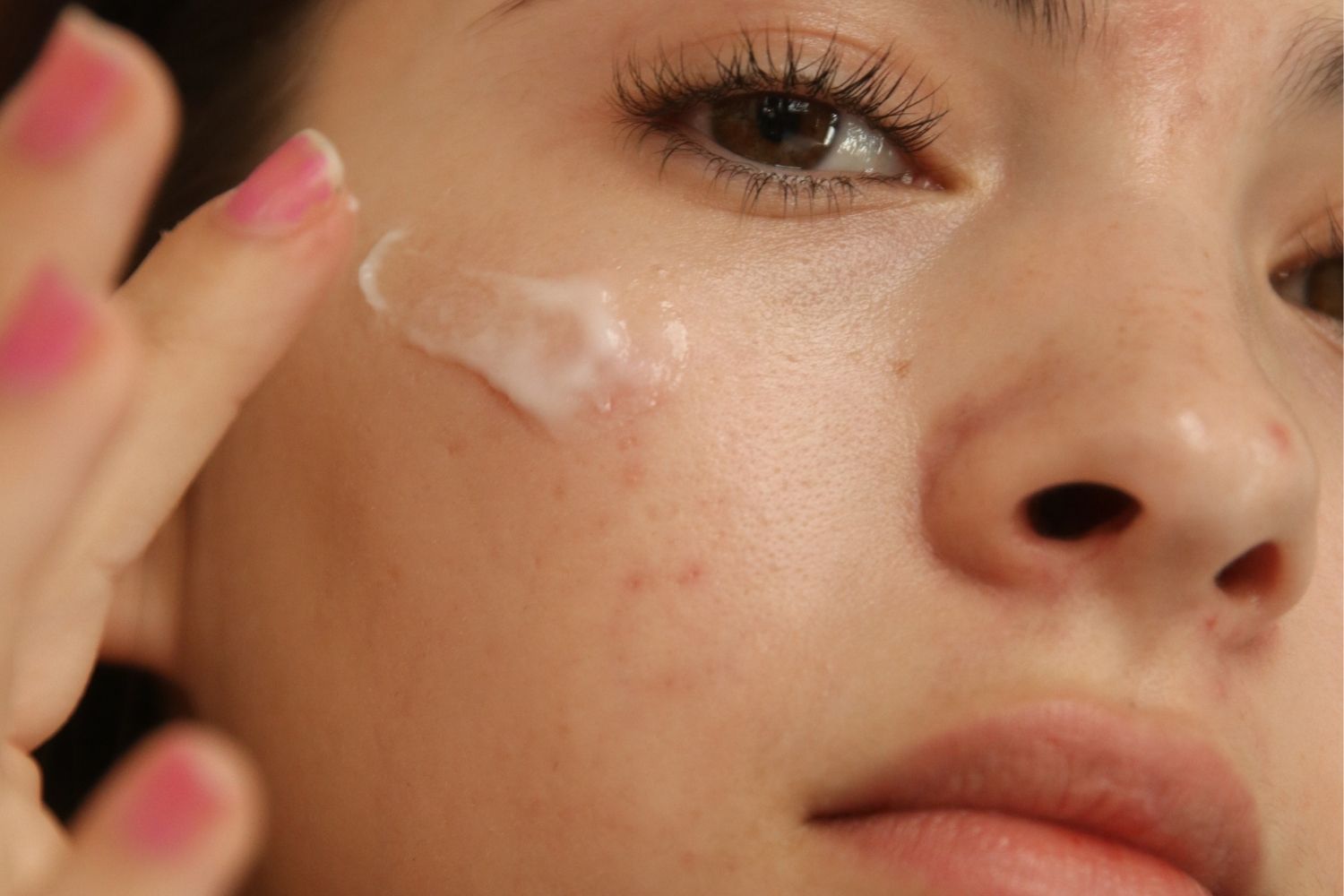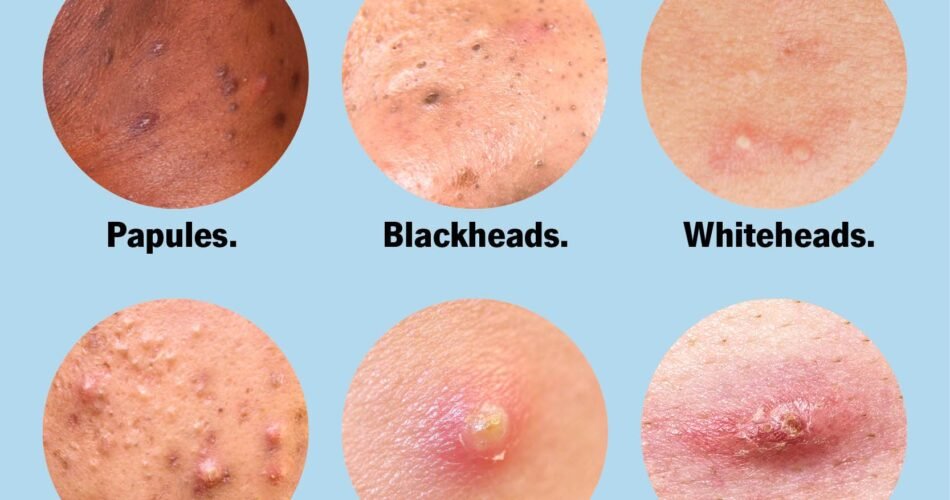Acne and pimples can look similar. But they are not the same.
Knowing the difference is important for treatment. Many people confuse acne with pimples. Both can cause red, inflamed bumps on the skin. Acne is a chronic condition, often requiring medical treatment. Pimples, on the other hand, are usually temporary and less severe.
Acne can lead to scarring if untreated. Pimples usually clear up on their own. Understanding the difference helps you choose the right care. In this post, we will explore the signs of acne and pimples. This will help you identify your skin condition correctly. Stay with us to learn more.

Credit: www.cutislaserclinics.com
Introduction To Skin Issues
Skin issues can be troubling. They affect your appearance and confidence. Acne and pimples are common problems. But, how do you know which one you have? Understanding skin issues helps you take the right action. This blog will guide you through the differences.
Common Skin Problems
Many people face different skin problems. Here are some common ones:
- Acne: It includes blackheads, whiteheads, and cysts.
- Pimples: They are small, red, and inflamed bumps.
- Eczema: It causes itchy, red, and dry patches.
- Rosacea: It leads to redness and visible blood vessels.
- Psoriasis: It results in scaly, itchy, and red skin.
Importance Of Identifying Skin Conditions
Identifying your skin condition is crucial. It helps you choose the right treatment. Proper care prevents further damage. Here are some reasons why it’s important:
- Effective Treatment: Knowing the issue leads to better remedies.
- Prevents Worsening: Early action can stop the condition from getting worse.
- Boosts Confidence: Clear skin improves your self-esteem.
- Saves Money: Avoids spending on wrong products.
Understanding the difference between acne and pimples is key. It helps you take the right steps for healthy skin.

Credit: www.laroche-posay.com.au
Defining Acne And Pimples
Understanding the difference between acne and pimples can be confusing. Both affect the skin and can impact confidence. Learning the basics helps in treatment and prevention. Let’s explore the definitions of acne and pimples.
What Is Acne?
Acne is a skin condition that occurs when hair follicles become clogged. It often includes blackheads, whiteheads, and cysts. Acne can appear on the face, back, and shoulders. It is common during puberty due to hormonal changes. Bacteria on the skin can also cause acne. The severity of acne can vary from mild to severe.
What Are Pimples?
Pimples are a symptom of acne. They are small, red bumps on the skin. Pimples form when oil glands become blocked and infected. They often have a white or yellow center. Pimples can be painful and may cause scarring. They usually appear on the face, neck, and back.
Here’s a quick table to summarize the differences:
| Feature | Acne | Pimples |
|---|---|---|
| Definition | Skin condition | Symptom of acne |
| Appearance | Blackheads, whiteheads, cysts | Red bumps with white/yellow center |
| Location | Face, back, shoulders | Face, neck, back |
| Causes | Clogged follicles, hormones, bacteria | Blocked oil glands, infection |
By understanding these differences, you can better manage your skin. Proper care can help reduce outbreaks and improve your complexion.
Causes And Triggers
Understanding the causes and triggers of acne and pimples is essential. Knowing these factors can help in managing and treating them effectively. Below, we explore some common causes and triggers.
Hormonal Changes
Hormonal changes are a significant cause of acne and pimples. During puberty, the body produces more androgens. These hormones increase the size and activity of oil glands in the skin. This can lead to clogged pores and acne.
Women may also experience hormonal acne during menstrual cycles, pregnancy, or menopause. Birth control pills can sometimes help in managing hormonal acne.
Diet And Lifestyle
Diet plays a crucial role in skin health. Foods high in refined sugars and dairy can trigger acne. A balanced diet with plenty of fruits and vegetables can improve skin condition.
Lifestyle factors also contribute to acne. Stress can increase hormone levels, leading to more oil production. Lack of sleep can affect skin health as well.
Maintaining a healthy lifestyle can help reduce acne and pimples. Regular exercise, proper sleep, and a balanced diet are essential.
Symptoms And Appearance
Understanding the symptoms and appearance of acne and pimples can help you identify and treat your skin condition effectively. Though they may seem similar, acne and pimples have distinct characteristics. Learn how to tell the difference below.
Characteristics Of Acne
Acne is a chronic skin condition that involves more than just the occasional pimple. It usually appears on the face, neck, chest, and back. Here are some key features:
- Multiple types of lesions: Acne includes blackheads, whiteheads, papules, pustules, nodules, and cysts.
- Persistent and recurring: Acne tends to last for a longer duration and often recurs.
- Inflammation: Acne spots are often red and swollen due to inflammation.
- Scarring: Severe acne can leave permanent scars or dark spots.
Acne is often caused by hormonal changes, genetics, and bacteria. It requires consistent treatment and care.
Characteristics Of Pimples
Pimples are a common skin issue but generally less severe than acne. They can appear anywhere on the body but are most common on the face. Key features include:
- Isolated spots: Pimples are usually single or few in number.
- Short-lived: Pimples often go away within a few days without treatment.
- Less inflammation: Pimples may be slightly red but less inflamed than acne.
- Surface level: Pimples often remain on the surface of the skin and do not cause scarring.
Pimples are often triggered by clogged pores from oil, dirt, or bacteria. They can be treated with over-the-counter products.
By identifying whether you have acne or just pimples, you can choose the right treatment to improve your skin health.
Diagnosis And Self-assessment
Understanding whether you have acne or just pimples can be challenging. Both conditions affect your skin but differ in severity and treatment. Self-assessment and proper diagnosis are vital in managing your skin health effectively.
When To See A Dermatologist
If you experience persistent or severe skin issues, consult a dermatologist. Here are some signs that indicate the need for professional help:
- Persistent breakouts that do not improve with over-the-counter treatments.
- Painful or cystic acne that causes discomfort.
- Scarring or dark spots from previous breakouts.
- Inflammation or redness that spreads beyond the face.
Dermatologists can provide tailored treatments. These may include prescription medications, topical treatments, or other therapies.
Home-based Assessment Techniques
You can perform a self-assessment at home to determine if you have acne or just pimples. Here are some techniques:
- Examine the type and severity of breakouts. Acne typically involves more severe and widespread breakouts, while pimples are usually isolated.
- Check for inflammation. Acne often causes redness and swelling, unlike simple pimples.
- Observe the duration of the breakouts. Acne tends to last longer and recur more frequently than pimples.
- Look for patterns. Acne often appears in clusters, while pimples are more random.
Using these techniques can help you identify your skin condition accurately. Keeping a skin journal can also be helpful. Note the frequency, severity, and type of breakouts you experience.

Credit: www.dermalogica.com
Treatment Options
Determining whether you have acne or just pimples is important for choosing the right treatment. Both conditions can cause discomfort and affect self-esteem. Effective treatment options are available to help manage and reduce these skin issues.
Over-the-counter Products
Several over-the-counter (OTC) products can help treat both acne and pimples. They are easily accessible and often the first line of treatment.
- Benzoyl Peroxide: This ingredient kills bacteria and reduces inflammation. Use it in creams or gels.
- Salicylic Acid: Helps to unclog pores and exfoliate the skin. Available in cleansers, lotions, and pads.
- Alpha Hydroxy Acids (AHAs): These acids help remove dead skin cells. Found in various creams and gels.
- Sulfur: Reduces oil and prevents bacteria growth. Often included in masks and spot treatments.
Prescription Medications
If OTC products are not effective, prescription medications might be necessary. A dermatologist can recommend stronger treatments.
| Medication Type | Description |
|---|---|
| Topical Retinoids | Derived from vitamin A, they help unclog pores and prevent new pimples. Examples include tretinoin and adapalene. |
| Antibiotics | Reduce bacteria and inflammation. Can be topical or oral. Common options are clindamycin and doxycycline. |
| Oral Contraceptives | For women, birth control pills can regulate hormones and reduce acne. Must be prescribed by a doctor. |
| Isotretinoin | A powerful oral medication for severe acne. It reduces oil production and has long-term benefits. |
Remember to consult a healthcare professional before starting any new medication. They can provide personalized advice and monitor your progress.
Prevention And Skincare
Understanding the difference between acne and pimples can be challenging. Prevention and skincare play a crucial role in managing both. With the right daily routine and preventive measures, you can keep your skin clear and healthy.
Daily Skincare Routine
A consistent daily skincare routine is essential for maintaining clear skin. Follow these steps:
- Cleanse: Use a gentle cleanser twice a day. Avoid harsh soaps.
- Exfoliate: Use a mild exfoliator once or twice a week. Remove dead skin cells.
- Tone: Apply a toner to balance your skin’s pH levels.
- Moisturize: Use a non-comedogenic moisturizer. Keep your skin hydrated.
- Protect: Apply sunscreen daily. Protect your skin from UV rays.
Tips For Preventing Breakouts
Preventing breakouts involves more than just a good skincare routine. Consider these tips:
- Diet: Eat a balanced diet. Avoid sugary and oily foods.
- Hydration: Drink plenty of water. Keep your skin hydrated from within.
- Stress: Manage stress levels. Practice relaxation techniques.
- Hygiene: Keep your hands and hair clean. Avoid touching your face.
- Cosmetics: Choose non-comedogenic makeup. Remove makeup before bed.
Following these skincare tips can help you manage and prevent both acne and pimples. Consistency is key. Stick to your routine and make healthy lifestyle choices for the best results.
Myths And Misconceptions
Understanding the difference between acne and pimples can be confusing. There are many myths and misconceptions that can make it harder to know what is true. Let’s clear up some of these myths with scientific facts.
Common Myths
- Myth: Only teenagers get acne.
- Myth: Eating chocolate causes pimples.
- Myth: Washing your face more will prevent acne.
Scientific Facts
- Fact: Acne can affect people of all ages, not just teenagers.
- Fact: There is no strong evidence that chocolate causes pimples.
- Fact: Over-washing your face can irritate your skin and make acne worse.
| Myth | Fact |
|---|---|
| Only teenagers get acne. | Acne can affect people of all ages. |
| Eating chocolate causes pimples. | No strong evidence links chocolate to pimples. |
| Washing your face more will prevent acne. | Over-washing can irritate the skin. |
Frequently Asked Questions
What Is The Difference Between Acne And Pimples?
Acne is a skin condition with various types of blemishes. Pimples are one type of acne lesion. Acne includes blackheads, whiteheads, and cysts.
How Can I Identify If It’s Acne?
Acne involves multiple lesions like blackheads, whiteheads, and cysts. If you have more than just pimples, it’s likely acne.
Are Pimples A Sign Of Acne?
Yes, pimples are a common symptom of acne. They are typically red, inflamed, and sometimes filled with pus.
Can Pimples Occur Without Having Acne?
Yes, pimples can occur without chronic acne. Stress, hormones, or a single clogged pore can cause occasional pimples.
Conclusion
Recognizing the difference between acne and pimples is crucial. Acne often involves multiple symptoms, while pimples are usually isolated. Knowing the type helps in choosing the right treatment. Consult a dermatologist for persistent issues. Proper skin care can prevent both conditions.
Simple routines can make a big difference. Focus on gentle cleansing and hydration. Avoid harsh products that irritate the skin. Stay informed and proactive in managing your skin health. Clear skin is achievable with the right approach. Take steps today for healthier skin tomorrow.
